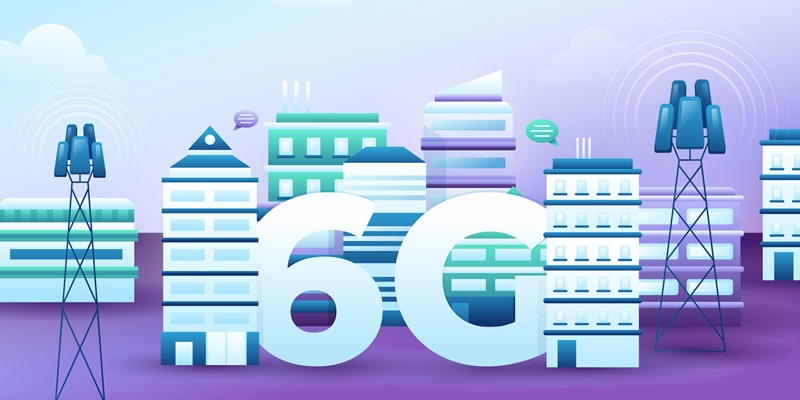In a rapidly evolving technological landscape, companies worldwide are constantly exploring innovative solutions to meet the growing demands of modern communication systems. LG Uplus, a prominent Korean telecommunications company, has recently made significant strides in the development of energy-efficient technology aimed at revolutionizing 6G networks. Collaborating with industry giants Infinera and Juniper Networks, LG Uplus has carried out groundbreaking tests on an All-Photonic Transport Network, a system designed to reduce power consumption by minimizing the number of conversions between electrical and optical signals. This critical advancement comes at a crucial time as the world anticipates an exponential increase in network traffic with the advent of 6G technology.
LG Uplus and 6G Technology Integration
All-Photonic Transport Network
The collaboration between LG Uplus, Infinera, and Juniper Networks centers on the innovative All-Photonic Transport Network, a transformative approach designed to reduce power consumption by streamlining the conversion process between electrical and optical signals. By minimizing these conversions, the network’s energy usage is significantly decreased, addressing one of the main challenges faced by modern communication infrastructures—efficiency. The anticipated surge in data traffic with 6G networks demands a counterpart equally prepared to manage the extensive load without exacerbating energy consumption concerns. This pioneering effort underscores LG Uplus’s commitment to sustainability and efficiency in next-generation telecommunications.
Beyond reducing power consumption, the All-Photonic Transport Network aims to enhance the overall performance and reliability of communication services. As data transmission needs continue to grow, with applications becoming more data-intensive and latency-sensitive, ensuring robust network infrastructure is paramount. The adoption of such cutting-edge technology places LG Uplus at the forefront of redefining network efficiency and functionality. As other telcos observe these developments, the replication and adaptation of this technology by industry peers could potentially set a new standard for energy-efficient network design, pushing the entire industry toward a greener and more sustainable future.
Integrating AI and Open Networks
LG Uplus’s vision for 6G technology extends beyond just the All-Photonic Transport Network. The company is actively pursuing integration with other key technologies, including artificial intelligence (AI), open networks, and advanced RAN (Radio Access Network) and network APIs. AI’s role in this integration is pivotal, as it promises smarter, more adaptive network management capabilities that can respond in real-time to evolving user demands and network conditions. By leveraging AI, LG Uplus can enhance network performance, flexibility, and responsiveness, enabling a more seamless and efficient user experience.
Open networks and advanced RAN are equally crucial elements in LG Uplus’s strategy, offering greater scalability and flexibility in deploying 6G services. These technologies support a more modular and interoperable network architecture, facilitating faster innovation and more efficient use of network resources. By integrating these technologies, LG Uplus aims to deliver superior performance, increased capacity, and lower latency, all essential features for the future 6G era. This holistic approach to technology integration reflects LG Uplus’s dedication to pioneering the next wave of telecommunications advancements, ensuring their readiness to meet the evolving demands of the digital age.
Government Initiatives and Investments
South Korea’s 6G Society Initiative
South Korea’s Ministry of Science and ICT (MSIT) has been instrumental in fostering advancements in 6G technology through the launch of the "6G Society" initiative. This initiative is designed to enhance technological exchange and collaboration between the realms of 6G and satellite communications. By bridging these fields, the initiative aims to develop hyperspace communication services that connect land, sea, and air seamlessly. The emphasis on integrating terrestrial and satellite communications technologies is seen as a crucial step in realizing a fully interconnected global communication network in the 6G era.
A significant aspect of the "6G Society" initiative is the focus on creating a collaborative ecosystem where industry players, researchers, and government bodies can unite their efforts toward shared goals. This initiative paves the way for groundbreaking innovations, fostering an environment where interdisciplinary knowledge and expertise can converge. Moreover, the initiative underscores South Korea’s ambition to lead the global charge in developing next-generation communication standards. With strong governmental support and strategic investments, South Korea is positioning itself as a hub for 6G innovation, potentially setting global benchmarks and standards.
Strategic Investments and Global Leadership
In today’s fast-paced technological environment, businesses globally are continuously seeking out cutting-edge solutions to address the rising demands of modern communication systems. LG Uplus, a leading Korean telecom company, has recently achieved remarkable progress in creating energy-efficient technology, aiming to transform 6G networks. Partnering with major industry players Infinera and Juniper Networks, LG Uplus has conducted revolutionary tests on an All-Photonic Transport Network. This system is specifically designed to lower power consumption by reducing the frequency of conversions between electrical and optical signals. This crucial innovation arrives at a pivotal moment as global network traffic is expected to surge dramatically with the introduction of 6G technology. The collaboration highlights a significant leap forward in making networks more sustainable and capable of handling future communication needs efficiently, ensuring a smoother and more energy-conscious transition into the next era of connectivity.

